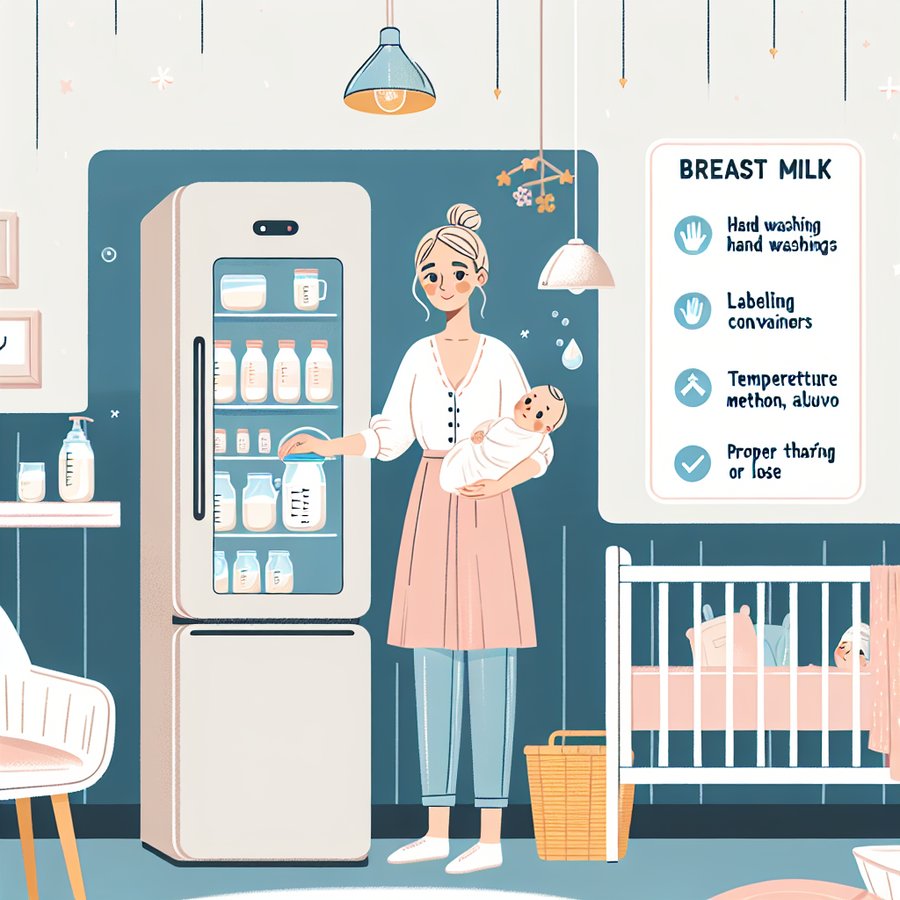Ensuring the safety and quality of breast milk is paramount for the health and well-being of nursing infants. This guide on Breast milk storage and handling safety tips is designed to provide new parents with the knowledge they need to store and handle breast milk safely, maintaining its nutritional value and preventing contamination. From the moment it’s expressed, breast milk requires careful handling to preserve its incredible benefits.
Understanding the Basics of Breast Milk Storage
Before diving into the specifics of storage and handling, it’s crucial to understand why these practices are important. Breast milk is a living substance, rich in nutrients and antibodies essential for an infant’s growth and immune system development. Incorrect storage and handling can lead to the loss of these vital components and introduce harmful bacteria. The Centers for Disease Control and Prevention (CDC) provides comprehensive guidelines on how to manage breast milk safely.
Storage containers play a significant role in preserving the quality of breast milk. Use clean, food-grade containers with tight-fitting lids made of glass or BPA-free plastic. It’s also advisable to label each container with the date the milk was expressed to ensure the oldest milk is used first, following the ‘first in, first out’ principle.
Breast Milk Storage and Handling Safety Tips
Proper storage is crucial for maintaining the safety and nutritional quality of breast milk. Here are some essential breast milk storage and handling safety tips to follow:
- Always wash your hands thoroughly with soap and water before expressing or handling breast milk.
- Store expressed breast milk in the back of the refrigerator or freezer where the temperature is most consistent.
- For short-term storage, breast milk can be kept in the refrigerator for up to four days. For longer storage, freeze it, which can preserve its quality for up to six months to a year.
- Avoid refreezing previously thawed breast milk to prevent bacterial growth.
When it comes to thawing frozen breast milk, do so gradually in the refrigerator or by placing the container in warm water. Never use a microwave to thaw or heat breast milk, as this can create hot spots that could burn your baby’s mouth and degrade the milk’s nutritional quality.
Advanced Tips for Breast Milk Storage
Building on the fundamental safety tips, there are additional practices that can help further protect the quality of your stored breast milk.
Firstly, consider using breast milk storage bags specifically designed for freezing human milk. These bags are pre-sterilized and made to withstand lower temperatures, reducing the risk of leaks and contamination. Secondly, if you’re returning to work or need to transport breast milk, use insulated cooler bags with ice packs to keep the milk at a safe temperature until it can be refrigerated or frozen.
Lastly, for parents who are managing a large volume of expressed milk, implementing a rotating storage system can help. This involves organizing your breast milk by date in the refrigerator or freezer, ensuring that older milk is used first. Such organization not only prevents waste but also helps maintain the milk’s best quality for your baby.
In conclusion, following these breast milk storage and handling safety tips is essential for the health and well-being of your child. From choosing the right storage containers to understanding the importance of temperature control, these practices ensure your baby receives the full benefits of your breast milk. For further reading on keeping your baby safe and healthy, explore our articles on Safe Sleep Practices to Reduce the Risk of SIDS, Choosing the Safest Baby Car Seats for Newborns, and First Aid Kit Essentials for New Parents.













